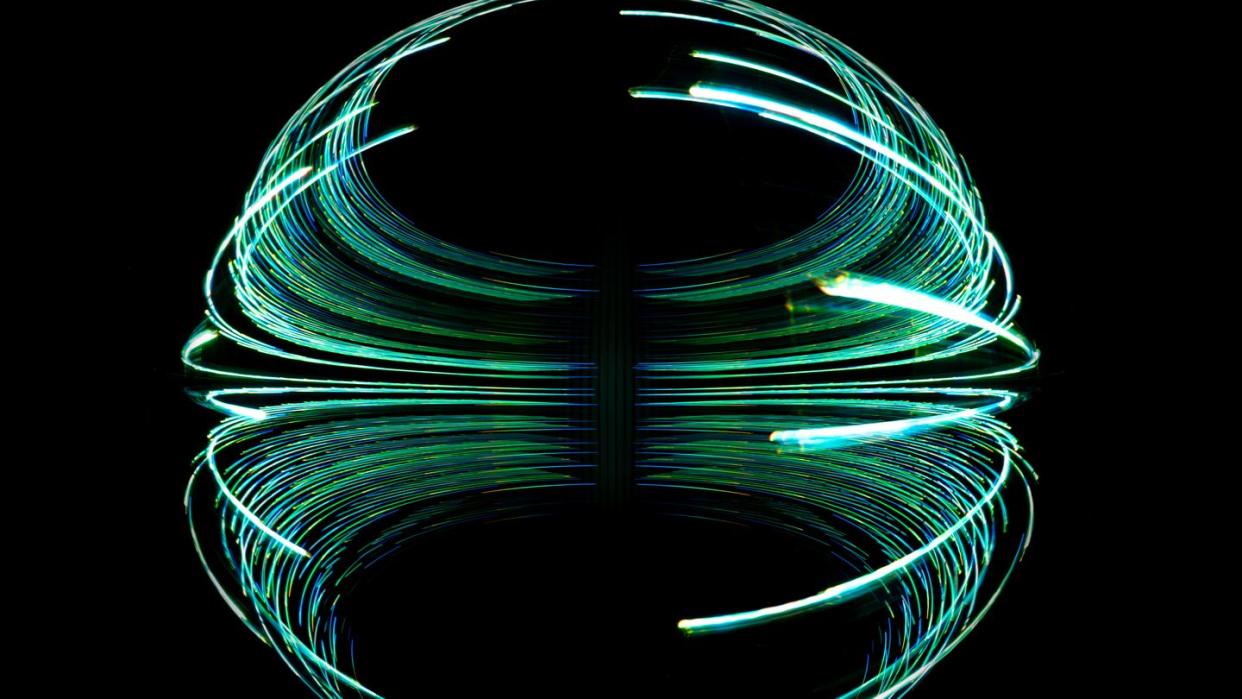Scientists Made a Quantum Object Called an Alice Ring. What Comes Next Is Much Weirder.

"Hearst Magazines and Yahoo may earn commission or revenue on some items through these links."
Topological monopoles are a quantum physics phenomenon that can decay into what’s known as “Alice rings.”
Named after Lewis Carroll’s famous heroine, this vortex ring flips the magnetic charge of any monopole that passes through it, creating an anti-monopole.
Although these rings last only 80 or so milliseconds, they could have big implications in the study of cosmology and high-energy physics.
The literary works of Lewis Carroll and the complex machinations of quantum physics rarely cross paths—but when they do, it’s about as mind-bending as it sounds.
Last month, scientists from Aalto University in Finland and Amherst College in Massachusetts created a bizarre quantum object known as an ‘Alice ring.’ An homage to Carroll’s titular character in Alice in Wonderland, the name is an apt one. This decayed monopole—a particle with only one magnetic pole—opens a “vortex ring” that flips the magnetic charge of any other monopole passing through its center, creating an “anti-monopole.” The results of the study were published Tuesday in the journal Nature Communications.
“Monopoles and vortices are fundamental topological excitations that appear in physical systems spanning enormous scales of size and energy, from the vastness of the early universe to tiny laboratory droplets of nematic liquid crystals and ultracold gasses,” the paper reads. “Although the topologies of vortices and monopoles are distinct from one another, under certain circumstances a monopole can spontaneously and continuously deform into a vortex ring with the curious property that monopoles passing through it are converted into anti-monopoles.”
There are a couple types of phenomena called “monopoles” floating around in the physics world. There are magnetic monopoles, first theorized by English physicist Paul Dirac in the 1930s. They still remain a hypothetical elementary particle, despite a century of searching (including large projects at CERN).
Then, there are topological monopoles, which derive from quantum fields creating a one-sided magnetism reminiscent of monopoles. Möttönen, along with his colleague David Hall, created topological monopoles by placing 250,000 rubidium atoms in a vacuum chamber, bombarding them with lasers to slow their motion, and plunging temperatures down to almost absolute zero to create what’s known as a Bose-Einstein condensate. Once in this ultra-cold state, the atoms acted as one quantum object.
Because of a quantum property known as spin (where the spin of subatomic particles interacts with magnetic fields and produces torque), Möttönen and Hall used computer simulations and mathematical models to apply the right amount of magnetic force to produce the defect, otherwise known as topological monopoles.
Alice’s adventure in Wonderland are long enough to the fill the pages of two entire novels, but these quantum defects are incredibly short-lived and only last for a few milliseconds. Möttönen compares topological monopoles to an egg teetering on the top of a hill—any slight disruption, such as sound, can trigger the monopole to start decaying into an Alice ring. But unlike monopoles, Alice rings have the ability to last 80 milliseconds—about 20 times longer than the monopole itself.
“From a distance, the Alice ring just looks like a monopole, but the world takes a different shape when peering through the center of the ring,” Hall said in a press statement.
“It is from this perspective that everything seems to be mirrored, as if the ring were a gateway into a world of antimatter instead of matter,” Möttönen added. “This was the first time our collaboration was able to create Alice rings in nature, which was a monumental achievement.”
The next step for Möttönen, Hall, and the rest of the team is to experimentally send monopoles through the ring to witness this “looking glass” inversion first hand, while also probing its applications in cosmology and high-energy physics.
Who knows how deep this rabbit hole goes?
You Might Also Like

